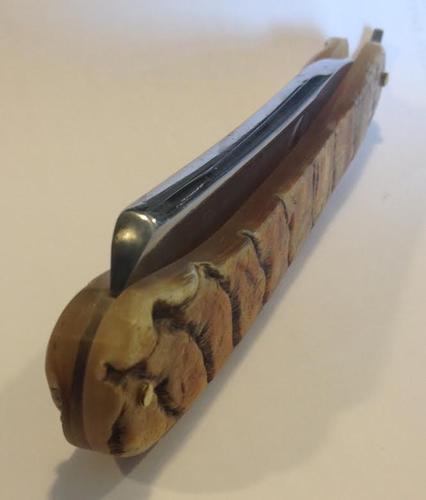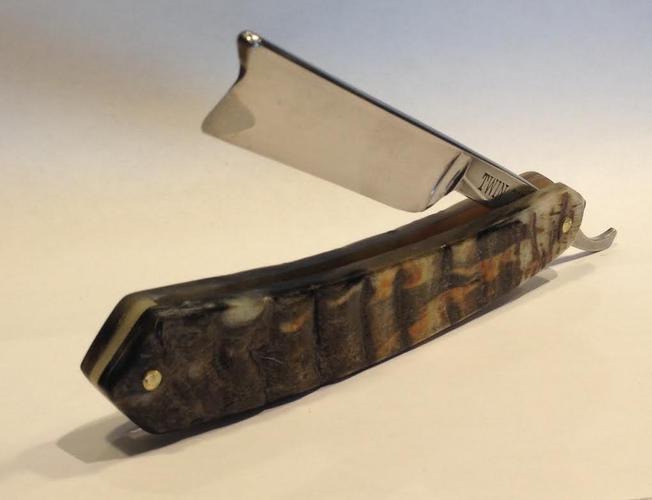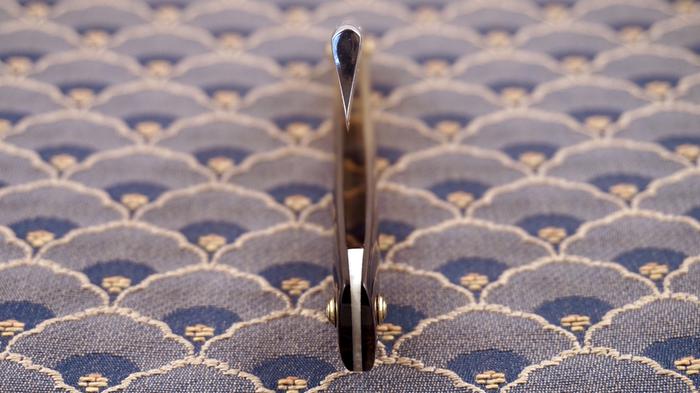Results 1 to 10 of 20
Thread: Wedge material
-
01-04-2016, 07:48 PM #1Junior Member

- Join Date
- Dec 2015
- Location
- uk
- Posts
- 9
Thanked: 0 Wedge material
Wedge material
Im going to be making some horn scales but i'm having trouble deciding on what material to use for the edge.
Do any of you have any suggestions?
-
01-04-2016, 07:58 PM #2

Aluminium is nice to work with
-
01-04-2016, 08:37 PM #3Senior Member




- Join Date
- Feb 2013
- Location
- Haida Gwaii, British Columbia, Canada
- Posts
- 14,444
Thanked: 4828
Lead is super easy to work with and easy to find at most fishing gear shops
http://straightrazorpalace.com/works...-way-i-do.html
http://straightrazorpalace.com/works...pic-heavy.html
Here is a couple of good threads on the subject. There are some simple jigs you can make to help in the process as well, no matter what your material of choice is. I do prefer the look of metal wedges. Lead, aluminum and brass seem to be the best from my perspective.It's not what you know, it's who you take fishing!
-
01-04-2016, 08:40 PM #4

Is the horn black, brown, or honey coloured?
For black, something contrasting is nice such as aluminium as has been suggested, or if you want to be traditional, lead.
My favourite that I've made myself for honey horn was faux ivory sandwiched between a couple thin pieces of brass.
We are pretty spoiled for choice these days with everything from traditional materials to modern composites and plastic in all shades and colours.
EDIT: Shaun - you just beat me to it!
It was in original condition, faded red, well-worn, but nice.
This was and still is my favorite combination; beautiful, original, and worn.
-Neil Young
-
01-04-2016, 08:46 PM #5

I restore a lot of old Sheffields and consequently work with lead wedges a lot. I have a supply of .54 caliber lead balls from a rifle I no longer own and they are plenty large enough to make a wedge for any size razor. I start by pounding them flat on a steel bench block (any anvil will do) and then form the taper with the hammer as well. I then trim most of the excess and flatten the sides with sandpaper on a flat surface. After test fitting and tweaking as necessary, I drill the hole, cut and flat the front face, and assemble the razor - the excess to be trimmed from the back and sides is rough cut with flush-cutting nippers and then filed flush with Swiss jewelers files.
-
01-04-2016, 09:44 PM #6

You could always use a piece of scrap from the same horn blanks and make it match. I did it on my Big Horn Rams razor and it turned out nice.
Here's how it turned out.

Last edited by Suticat; 01-04-2016 at 09:52 PM.
"The production of to many usefull things results in too many useless people."
Karl Marx
-
01-04-2016, 10:54 PM #7Junior Member

- Join Date
- Dec 2015
- Location
- uk
- Posts
- 9
Thanked: 0
Thanks for the ideas. It is water buffalo horn.
I was think of a white material but I can't think of anything haha.
I'm liking the metals though.
-
01-04-2016, 11:35 PM #8

If you want a white material use bone. It's easy to work with and readily available. Plus it looks awesome with horn. This wedge was done with a black bear femur.

Take your time and find something unique. I'm big on that theory. I just get tired of the same old same old look that everyone else has. I'm just a rebel that way... LoLLast edited by Suticat; 01-04-2016 at 11:39 PM.
"The production of to many usefull things results in too many useless people."
Karl Marx
-
01-04-2016, 11:50 PM #9

I second the use of bone; here is a camel bone wedge with variegated horn scales:

-
The Following User Says Thank You to sqzbxr For This Useful Post:
ajkenne (01-05-2016)
-
01-05-2016, 12:11 AM #10


 23Likes
23Likes LinkBack URL
LinkBack URL About LinkBacks
About LinkBacks






 Reply With Quote
Reply With Quote





